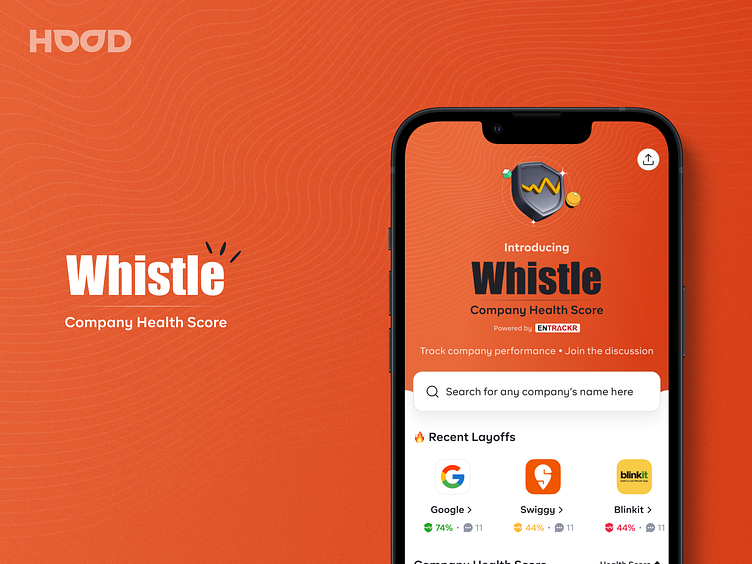Whistle - A Tool for Company Health, Culture, and Pay Parity
Some context about Hood
Hood is a new-age Anonymous social network that allows users to share their true stories without the fear of being judged.
Why Whistle?
Let's explore how the Whistle feature came to life from the beginning. The feature idea was proposed by one of our founders, aiming to address a simple problem: providing anonymous insights into a company's health score, culture, and pay parity. The name ‘Whistle’ is inspired by the concept of a whistleblower, representing truth. Our goal was to create a discussion board for individual companies to gather qualitative insights.
We were excited to work on this new concept, but the challenging part was figuring out where to start, as there were no existing tools in the industry for this purpose. Despite the tight deadline, I managed to complete the project solo, and the final result turned out well.
For reference, I have also shared the initial design iterations at the end (Behind the Designs).
Design Approach
Our primary aim was to make the company's Health Score as intuitive and easy to understand as possible. Visually, I kept the design simple yet distinctive. While I used orange as an accent colour, the core foundation and UI components remained clean and light.
I focused on copy and readability to build a trustworthy relationship with the user, helping them invest comfortably.
Getting the flow right was challenging, but through discussions with everyone, I managed to simplify it.
For the company health score, we used the following parameters to determine the ratings:
0 - 19 = Very Poor, Red
20 - 39 = Poor, Red
40 - 59 = Good, Yellow
60 - 79 = Very Good, Green
80 - 100 = Excellent, Green
The colour will depend on the rating.
For culture, we used these terms: Poor, Satisfactory, and Great.
For pay parity, we used these terms: Below Average, Average, and Above Average.
All of this text and data were handled through remote config, allowing us to make edits from the backend without needing to release new builds every time.
Getting the design right on the first try can be tough, but the process is important. Each iteration helps you learn from your mistakes, and going from being completely clueless at the start to having a finished design is a great experience.
As with any 0 to 1 startup, where experiments and campaigns are always happening, the design needed to be flexible and template-based to allow for quick updates with minimal design involvement.
So, I designed everything to be scalable. The elements can be easily rearranged or modified from the backend, which reduces the need for constant design changes while still maintaining high-quality standards. This also makes it easier for new designers to get up to speed quickly.
Impact
Overall app retention before introducing the feature: D1 - 21.2% and D7 - 8.9%. After introducing the feature: D1 - 23.8% and D7 - 12.3%.
A total of 457 discussions happened, adding 18K comments.
The number of company searches was 20K, with 893 unique company searches.
Conclusion
After 4 weeks, we reached a maturity point where most of the numbers began to decline. We also received feedback from many of our users and realised that the Whistle feature had limited utility, as the professional segment only required that information and discussion occasionally. As a result, we decided to halt any further enhancements and development of the feature.
"While experimentation is essential in a startup, it is even more important to quickly recognise what works and what doesn’t, and focus energy on initiatives that drive growth."
Do you like what you see?
Get in touch: souravsrivastava123@gmail.com • Linkedin






